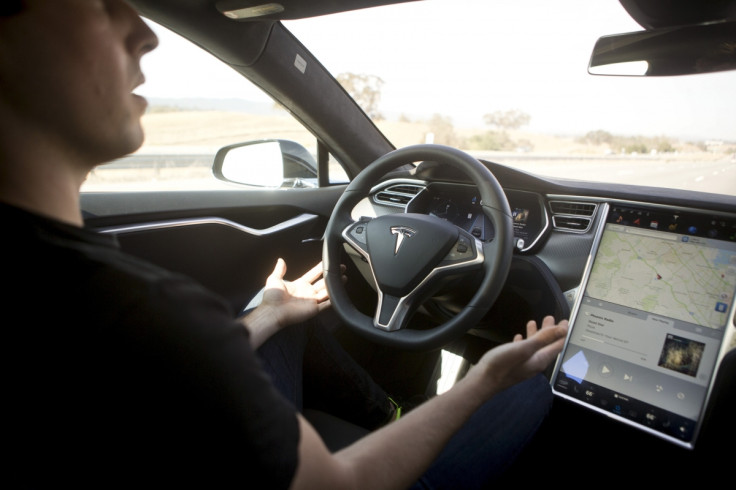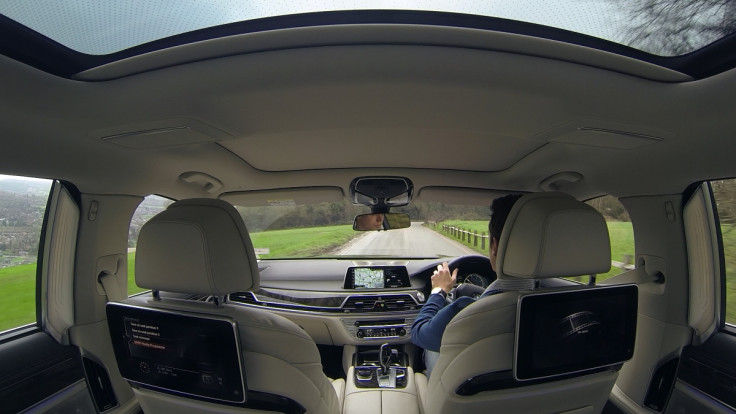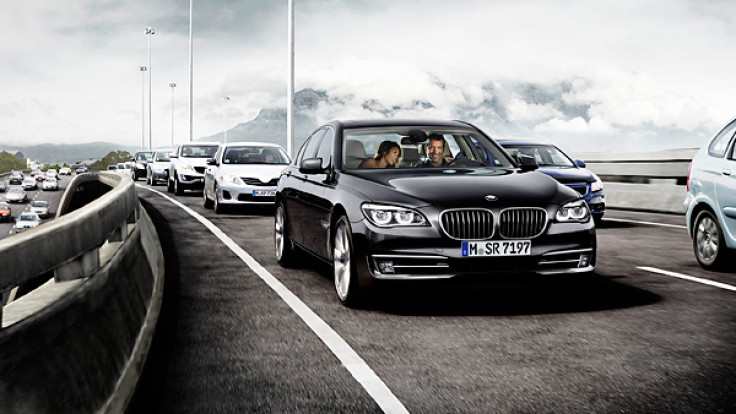Tesla Model S vs BMW 7-Series test drives: A 70mph hands-free cruise into the future

Taking my hands off the wheel around a corner at 70mph for the first time was a very strange experience. But keeping my hands off for the second time felt oddly comfortable, almost natural.
I'm driving (or rather, I'm being driven) in the Tesla Model S P90D with Autopilot switched on. I'm overtaking traffic in the outside lane of the M25 and it's over five miles since I was last in control. I'm flicking the indicator stalk to change lane and touching the steering wheel gently every so often to let the car know I'm alive and haven't climbed into the back seat.
There are three passengers in the car with me and we're making good progress through Surrey and into Kent early one Saturday morning. A car pulls out in front of us to overtake; I cover the brake with my foot and move my fingers closer to the wheel, but Autopilot has me covered.
The Tesla slows gently to stop us running into the back of the slower car, takes us to a safe following distance, then settles down to their speed, before accelerating again when they pull back in.
My job means I spend a lot of time living in a future of VR headsets and unreleased smartphones, but this was different. An electric car with a massive computer screen for a dashboard and its own iPhone app was driving me along the motorway without missing a beat.
But the Tesla isn't alone. Several other cars on sale in the UK right now can drive themselves on motorways, by scanning the lines between each lane and following the vehicle in front, just as the Tesla does. One is the 2016 BMW 7-Series, a car which gives the Model S a real run for its money as far as onboard technology is concerned.

This is a car with televisions, massage seats, a fitness programme for long journeys, speakers made from diamonds, and the ability to park itself in a garage without you even being in the car. It's not electric and it doesn't have a touch screen as large as the Tesla's, but it isn't far behind.
Broadly speaking, both cars use the same technology to drive themselves. Created by an Israeli firm called MobilEye, the system uses a forward-facing camera and various other sensors to scan the road ahead for white lines, speed signs, pedestrians and traffic of all varieties. Tesla is working the technology harder than BMW − and the many other car companies who use MobilEye − and after just a few seconds with both autonomous systems switched on, it shows. Where the Tesla feels surefooted and capable from the off, the BMW takes its first steps more tentatively.

Called Lane Keep Assist, the BMW system is part of the car's active cruise control, which keeps to a set speed and automatically slows down in traffic. The autonomous steering, which works to keep you in your lane on the motorway, is fiddly to switch on if you aren't familiar with the controls, but shows its status clearly enough through the car's instrument cluster.
When two lines representing the edges of your lane turn green, the car is driving itself. Just like the Tesla, the steering wheel's first autonomous twitches and turns are spooky, but the car soon finds its rhythm. Where Tesla bills its system as autonomous driving, BMW more cautiously suggests it can help share the driving; in return, you are asked to keep one hand gently on the wheel.
Unfortunately, I never quite felt confident enough in the 7-Series to take my hands away completely. When driving in the inside lane it would try and follow a slip road off to the left, and I sensed the car wasn't able to read the white lines as well as the Model S. It failed to drive itself for more than a minute or so at a time before handing control back to me. The BMW also alerts you if you stop touching the wheel for more than a few seconds, whereas the Tesla checks less often.

That isn't to say the Tesla is perfect. When the lines are faded and worn the car has a hard time, and if the right-hand line of the outside lane was missing, as it sometimes is, then the left line often wasn't enough to guide it, unless a vehicle was in front for Autopilot to follow.
Driving along a motorway unaided is mighty impressive, but my favourite moment in both cars was when they drove themselves in stop-start traffic. In the Model S, I had Autopilot switched on and encountered stationary traffic on the motorway. The car slowed, stopped, then set off again when the car in front moved away. This for me was much more impressive, as it was a demonstration of a car making the decision to stop and then start driving again all by itself.

In traffic the BMW uses Traffic Jam Assistant, which handles the accelerator and brakes, and "shares" the steering to keep you in lane from zero to 37mph. As with motorway cruising, you have to rest a hand on the wheel for the car to do the work for you.
Both systems can also drive the car without a driver being inside, to help you manoeuver in and out of tight garages or nose-on parking spaces, but I'm yet to try this out for myself. Neither review car had the feature enabled when I borrowed them, but at the time of publication they have now been switched on although they can only be used on private land.
Neither solution is perfect just yet, but importantly these cars (and many others on the road today) already have the hardware necessary to drive themselves. Once the software is updated and improved, these cars will get better with age. And when it's time to trade in and buy a new one at the end of the decade, that car might well be able to drive itself everywhere.
Watch: IBTimes UK reviews the 2016 BMW 7-Series
© Copyright IBTimes 2024. All rights reserved.






